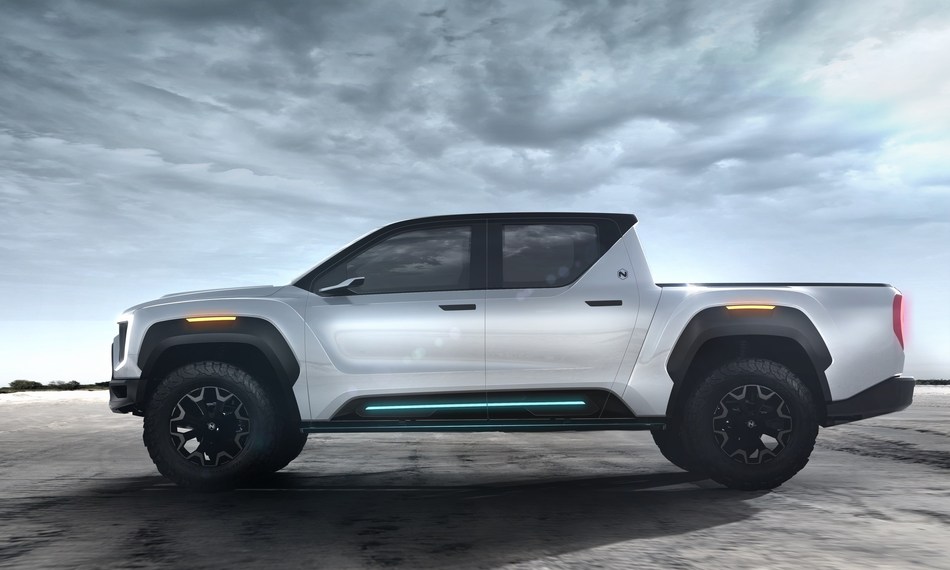
Electric truck designer Nikola (yes, as in like, Tesla) is throwing down the gauntlet to the auto industry with the announcement of its 600-mile range EV pickup truck.
According to the announcement, it’s going to stand toe to toe with the likes of GMC’s Hummer EV, and Tesla‘s Cybertruck.
Just stay home
Orrrrr mingle with the brightest minds in tech on June 18 + 19
If you hadn’t heard of them, Nikola is an electric vehicle design firm that has so far focussed on developing green semi-articulated haulage trucks.
[Read: New Tesla registrations up 168% in Germany — adding to Model 3’s EV dominance]
Mad specification
Nikola claims it will have a sub-3 second zero to 60 time, will generate 906 horsepower, and 980 ft lbs of torque. What’s more, it will allegedly have a range of 600 miles (966 km). Stick that in your tailpipe and smoke it Tesla.

According to a recent tweet, it might be a little more expensive than the Cybertruck, though. Nikola says it’ll cost somewhere between $60k – $90k.
Thank you! $60k-$90k
— Nikola Motor Company (@nikolamotor) February 11, 2020
To get that range, the Badger will have an electric-fuel cell hybrid drivetrain. It claims it will be able to drive 300 miles on pure battery power, but that range can be doubled when using the vehicle’s hydrogen fuel cell.
Hybrid hydrogen
Hydrogen is often touted as a potential clean alternative to petrol and diesel. In a fuel cell, hydrogen undergoes a chemical reaction to produce electricity, which can then be used to drive the motors. Water is the only waste product.
Like petrol or diesel cars, it can take just a few minutes to refill a hydrogen car and totally replenish its range.

There are a couple of issues though. For one, it takes an immense amount of energy to produce hydrogen, so in some cases, depending on where that energy comes from, it’s not always as green a fuel as it seems.
Hydrogen also needs to be stored and transported under immense pressure, and the refueling infrastructure is next to nonexistent. In the US, you’d be very luck to find any outside of California.
But to allay any concerns about the Badger having potentially useless technology under the hood, Nikola also plans to install 700 hydrogen filling stations across North America.
Much like Tesla and its supercharger network, this could turn out to be a vital strategic move.
The estimated performance and range figures are certainly exciting, but how close they will be to real-world figures remains to be seen.
The Badger is scheduled to debut at Nikola World 2020 in September this year.
But one question still remains, why on earth did they call it the Badger?
Read next: Rode’s new NT-USB mini mic wants to dethrone Blue’s Yeti


